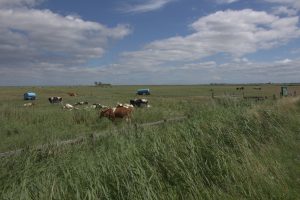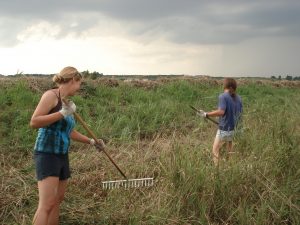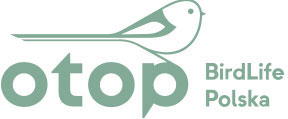In 1999, the Polish Society for the Protection of Birds started implementation of the “Conservation plan for the Beka nature reserve”, approved in 1995. The main conservation measure undertaken to preserve its outstanding natural values is extensive farming. Unfortunately, after establishing the reserve by the end of the 1980s farming ceased which caused unfavourable changes. In 1999, over 70% of the saline meadows and nearly 100% of sedge flush mires were overgrown by reeds and the breeding population of the Dunlin declined from about 50 pairs to 1-2 pairs. Conservation actions were necessary.
The following conservation measures are now performed:
- mowing reeds – removal of high reeds growing on former pastures allows restoration of grass and sedge communities,
- mowing meadows – allows maintenance of meadow communities in favourable condition,
- livestock grazing on saline meadows – a protection measure that considerably reduces expansion of reeds and allows maintenance of meadow and pasture plant communities.
The meadows and pastures are important sites for waders. Some of them breed there while others rest during spring and autumn migration.
More about our work
Mowing reeds:
Summer mowing is the most beneficial measure as it enhances reduction of dense reed beds. Actions based on knowledge of reed phenology warrant positive effects. In the spring, young plants appear which take nutritive substances for growth from their underground organs. This lasts until the plant blossoms (typically in the second half of July). Flowering is a critical moment after which the plant starts to deposit reserves for the next growing season. It is central to cut reeds just before flowering. Gradual depletion of reserves in the plant over successive years makes reeds scarcer, weaker and lower. An additional advantage is exposing the ground, which promotes the growth of grasses and low sedges, which were earlier outcompeted by reeds. The regrowing young reed stems and the developing meadow vegetation form an attractive grazing site. Animals graze on young reed stems, which additionally weakens them.
A limitation of this measure is technical problems with equipment and wetness of the ground. In Poland, few companies have equipment suitable for summer mowing of reeds and ordinary farming machines cannot be relied on in the difficult marshy conditions of the Beka reserve.
Livestock pasturage:
Grazing by livestock (cattle and horses) is used as a main conservation measure in saline grassland. It helps maintain the habitat in good condition through extensive grazing. It also contributes to restraining reeds and treading young reed stems after summer mowing. In addition, grazing retains the tussock structure of the habitat, which increased the number of potential microhabitats. Prospectively, after reed is completely eradicated, a herd of about 60-100 cattle heads will be grazed in the reserve.

Wypas na Bece, fot. F. Kowalczuk
Mowing meadows:
Mechanical mowing is applied as a main conservation measure on Molinia meadows. Plants in these communities develop the best when their decaying stems are removed at the end of the growing season. Thanks to this, in spring young shoots grow vigorously, not hindered by the dry biomass from the previous years.
Restoring agricultural management is possible mainly with the cooperation between OTOP and farmers as well as horse and cow breeders.
Hand mowing of flush mires:
Measures applied in flush mires require a completely different approach than in saline grassland. As this habitat is definitely more sensitive and more difficult to restore than saline grassland, a flush mire cannot be grazed or mown with heavy machinery such as tractors or mowers, etc. Therefore, flush mires are mown by hand using scythes and brush cutters. The cut reed is removed. Naturally, this habitat is much less attractive for farming. After reed is eradicated, the flush mires will be mown extensively every 3-4 years. To the rescue of these ‘unattractive’ meadows came agri-environmental schemes, which offer subsidies in return for appropriate management of the meadows.

Prace w rezerwacie, fot. Magdalena Garnysz

